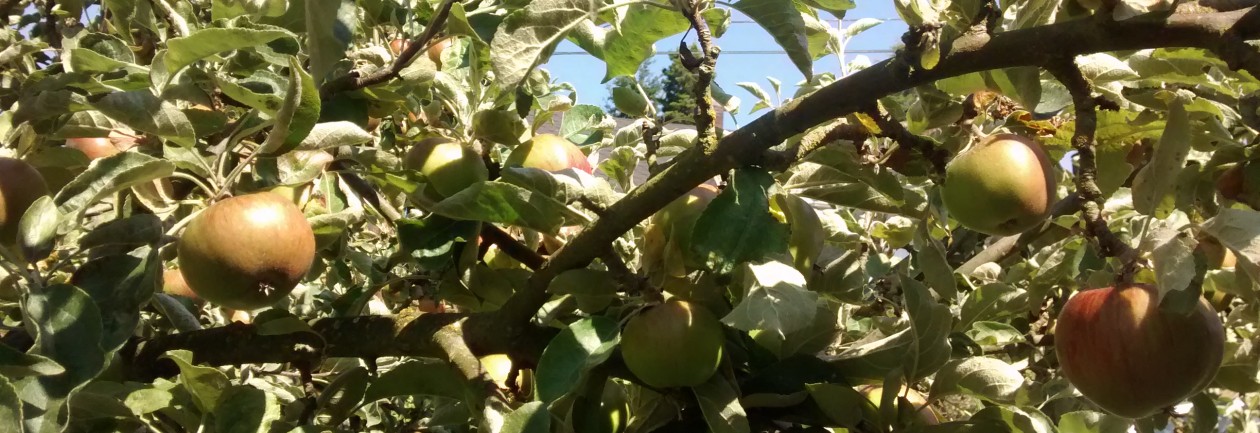“Now the Sabbath-yield of the land (is) for you, for eating for you, for your servant and for your handmaid, for your hired-hand and for your resident-settler who sojourn with you; and for your domestic-animal and the wild-beast that (are) in your land shall be all its produce, to eat.”
Leviticus 25: 6-7
If the land yields food in a Shmita year that has grown without the sowing of seeds or the tilling of soil, then according to Scriptural Law, that food is considered Sabbath-yield and is permitted.* Clearly an agricultural system that emphasizes food obtained from plants which either re-grow from their roots each year, or which are permanent fixtures of the landscape such as trees, shubs and vines, will produce more useable food during a Shmita year than one that is primarily based on crops which require the soil to be tilled and re-seeded every year.
Intriguingly, whatever our motivation may be for aspiring to a Shmita-friendly agricultural system, with doing so would come layer upon layer of tangible, ecological benefits.
According to Eric Toensmeier, author of Perennial Vegetables: From Artichoke to ‘Zuiki’ Taro, a Gardener’s Guide to Over 100 Delicious, Easy-to-Grow Edibles, perennials can be low maintenance: they do not need to be re-sown each year, and with their larger root systems, can draw nutrients and water from deep in the soil. They are soil builders: they “improve the soil’s organic matter, structure and porosity, and water-holding capacity through the slow and steady decomposition of their roots and leaves.” They provide ecosystem benefits: their root systems hold water, and they provide habitat to beneficial garden plants and animals. And they sequester carbon dioxide in their deep root systems.
Jerry Glover is another advocate for perennial crops, particularly, in his case, wheat. Glover is part of a movement of plant breeders and agricultural scientists working to develop new breeds of perennial grain crops that could replace some or all of the annual species currently in use around the world. The focus on grain crops is important because about 70% of all of the world’s cropland is in grain production, according to National Geographic.
Such research is moving forward in the part of the Pacific Northwest known as the Palouse, which is one of the world’s most productive wheat-growing regions. The hope there is that by reducing tillage, wind and soil erosion can be avoided. In Perennial Wheat: the development of a sustainable cropping system for the U.S., Pacific Northwest, published in the American Journal of Alternative Agriculture, the authors look at some new wheat varieties that are being tested for productivity, with the hope that they could be used in certain soil conditions in combination with traditional varieties of wheat to reduce soil erosion, enhance wildlife habitat, and provide other benefits such as water retention and carbon sequestration.
One of the practices I am incorporating into my personal Shmita awareness is learning about perennial food producing plants that I can one day incorporate into my landscape (starting in 5776, since another of my practices is to lay off planting new things in my garden in 5775!) This year, I plan to learn more about plants that I might want to grow and explore the possibility of growing them in our shul’s garden. Maybe at some point I will have the opportunity to teach about those plants, encouraging others to try some perennial vegetables in their own gardens – so that they will be ready with harvests to enjoy by 5782, the next Shmita year.
I will also look for ways to support the development of perennial grain harvests. Every day we read about the rigor with which the Earth is worked to produce annual commodity crops, such as wheat, corn, canola, and soy. The soil is tilled, leading to erosion and destruction of native microbe communities, then it is sprayed with chemicals to prevent weeds and pests. The cycle seems to be a vicious one, as more chemicals are needed as the pests adapt, and more fertilizer is needed as the natural productivity of the soil is not allowed to regrow. Chemicals then flow off the land, where they pollute water bodies and kill fish. Farms are no longer wholesome places to raise children, and clearly they are not welcoming places for wildlife.
In contrast, Shmita offers a vision of agriculture in which people and wildlife are welcome and nourished; a vision of an Earth which belongs to God and is entrusted to us as a perpetually renewable gift. May there come a day when we learn to treat it as such!
*Rabbinic law does not allow the use of plants which may regrow from seeds dropped the previous year, or which otherwise look exactly like plants which are prohibited, in the belief that people may cheat. See Rambam, Mishne Torah, Hilchot Shmita v’Yovel 4.1-3 (source: Shmita Sourcebook)
